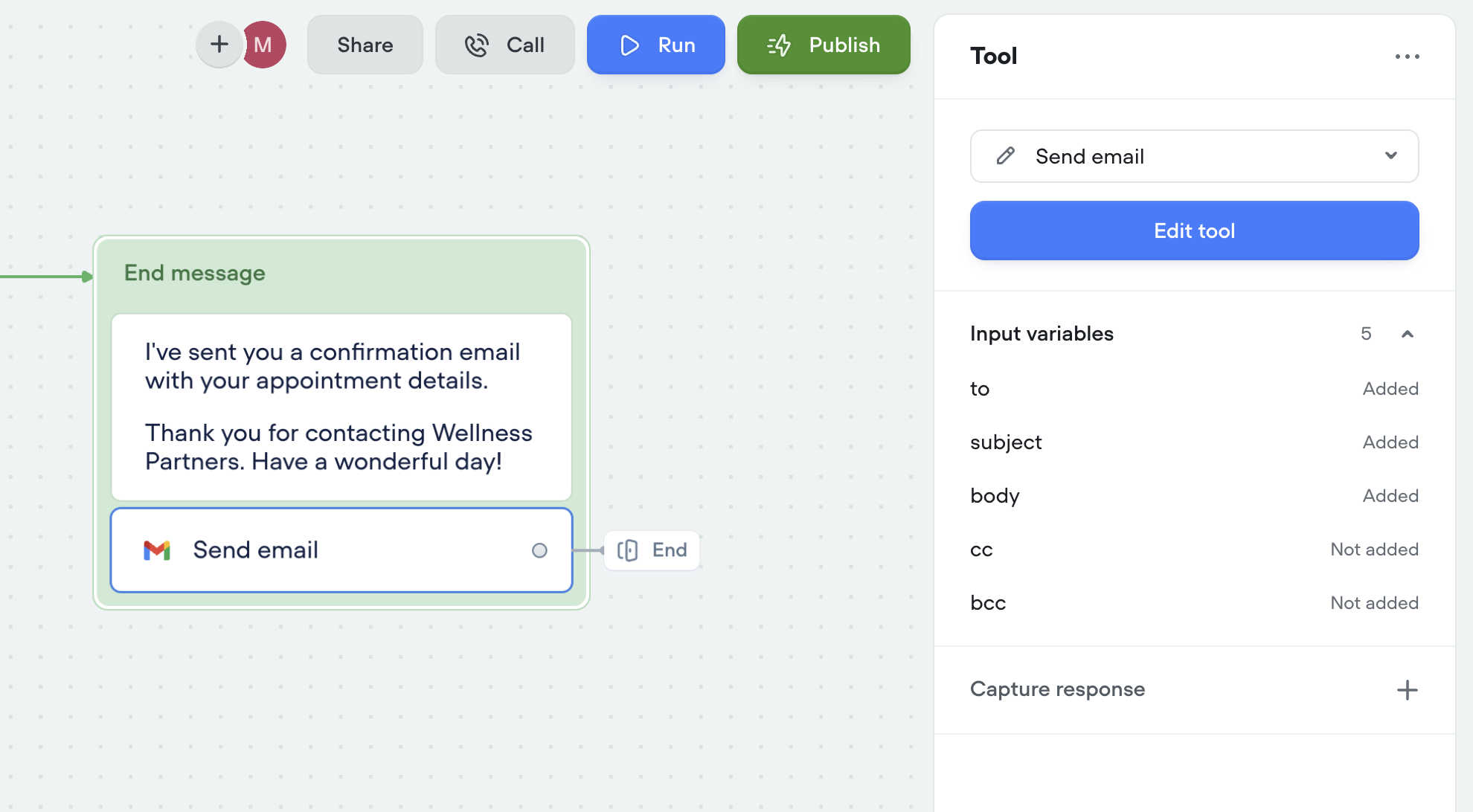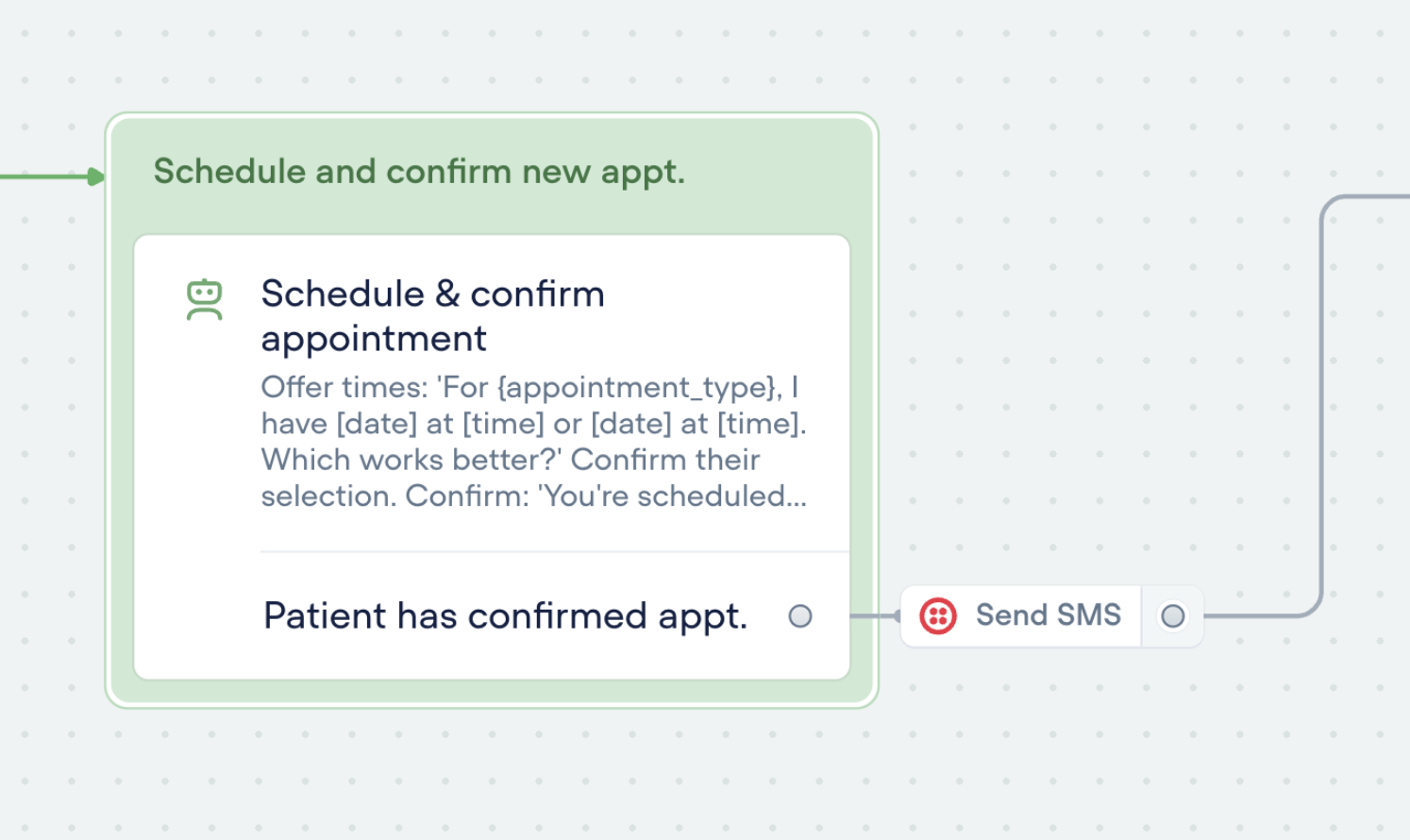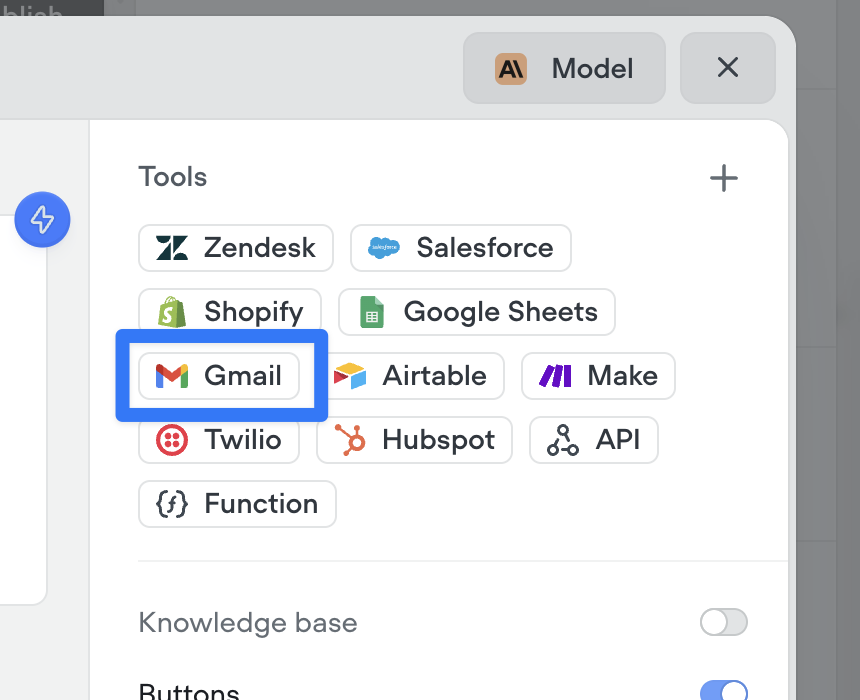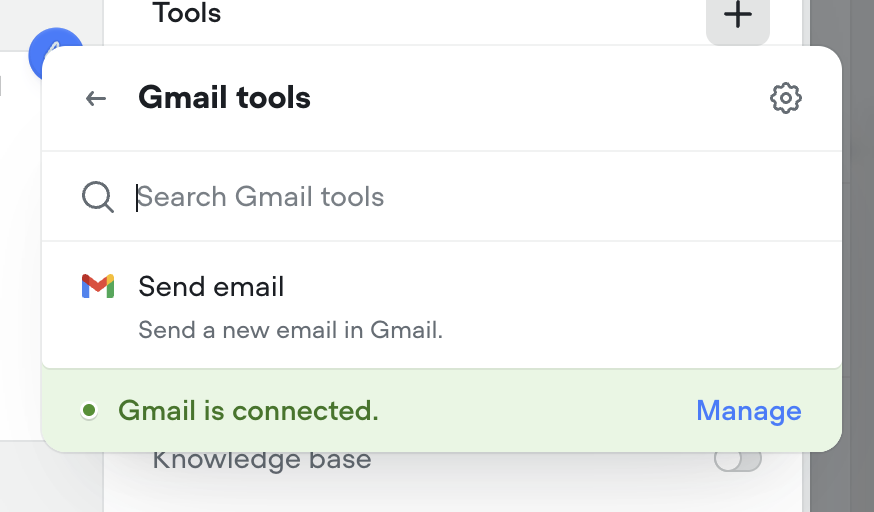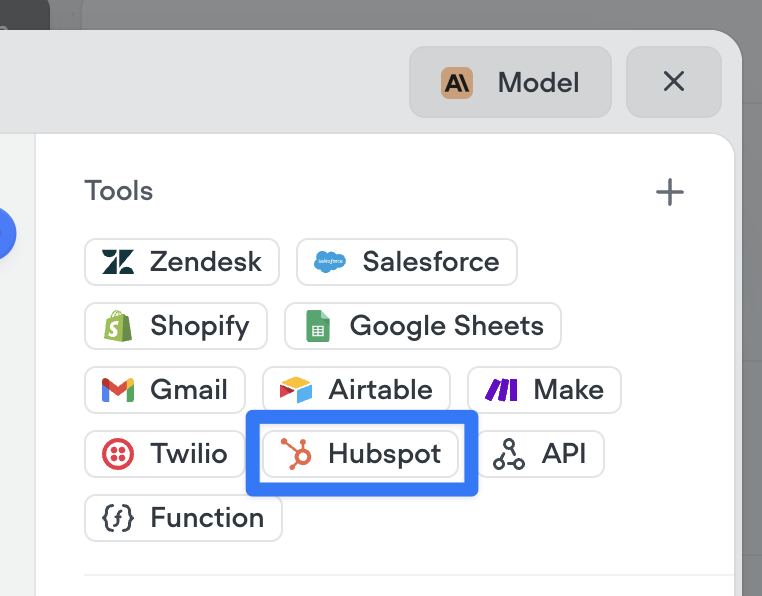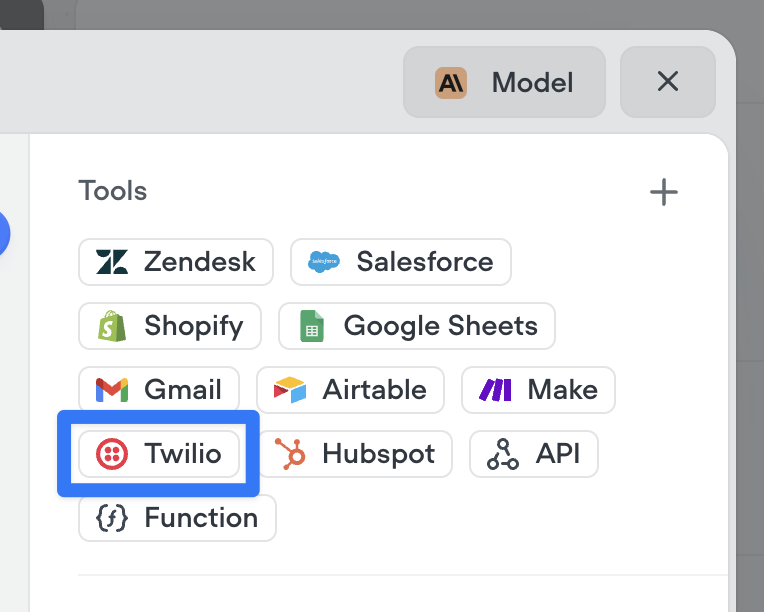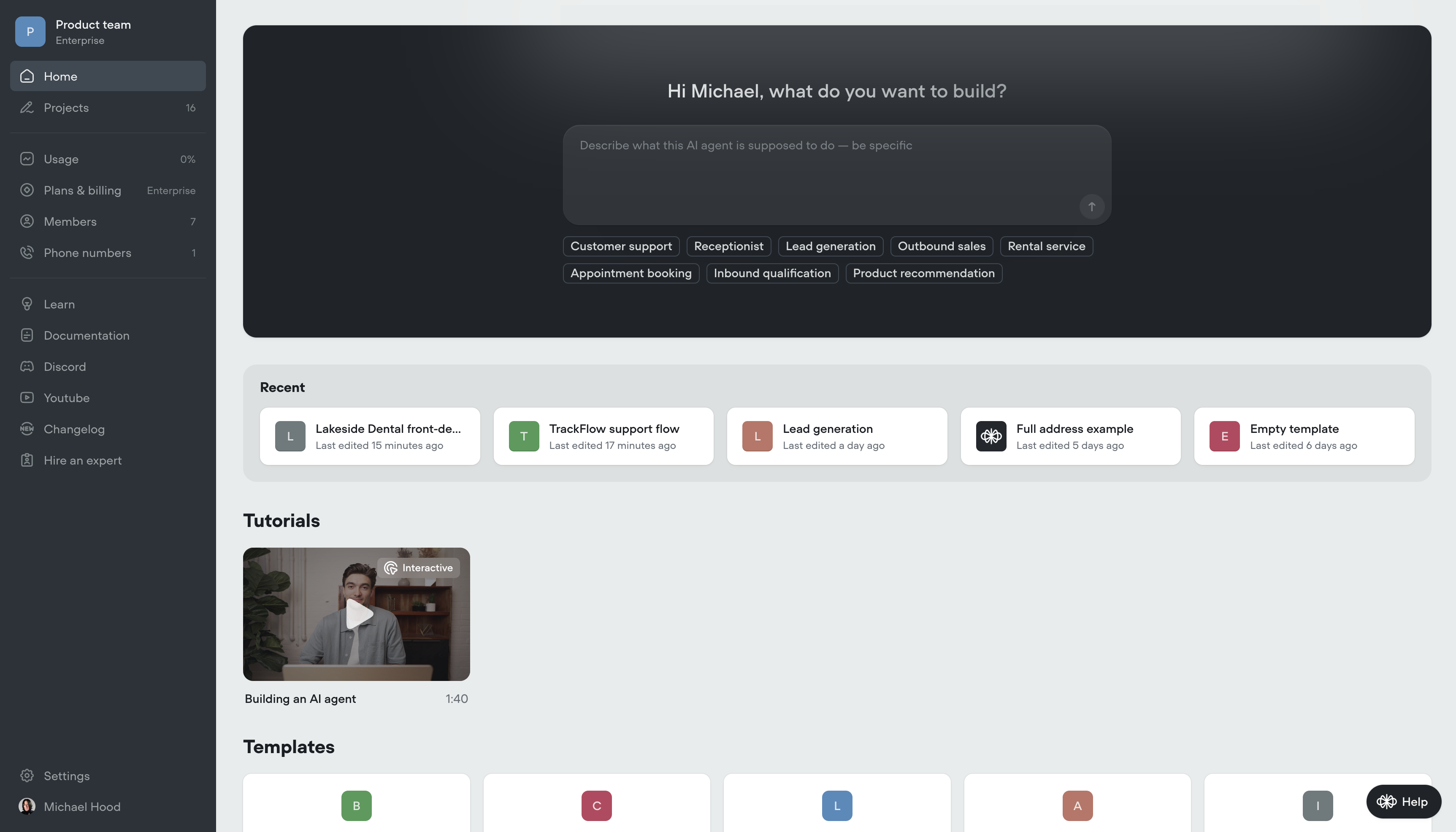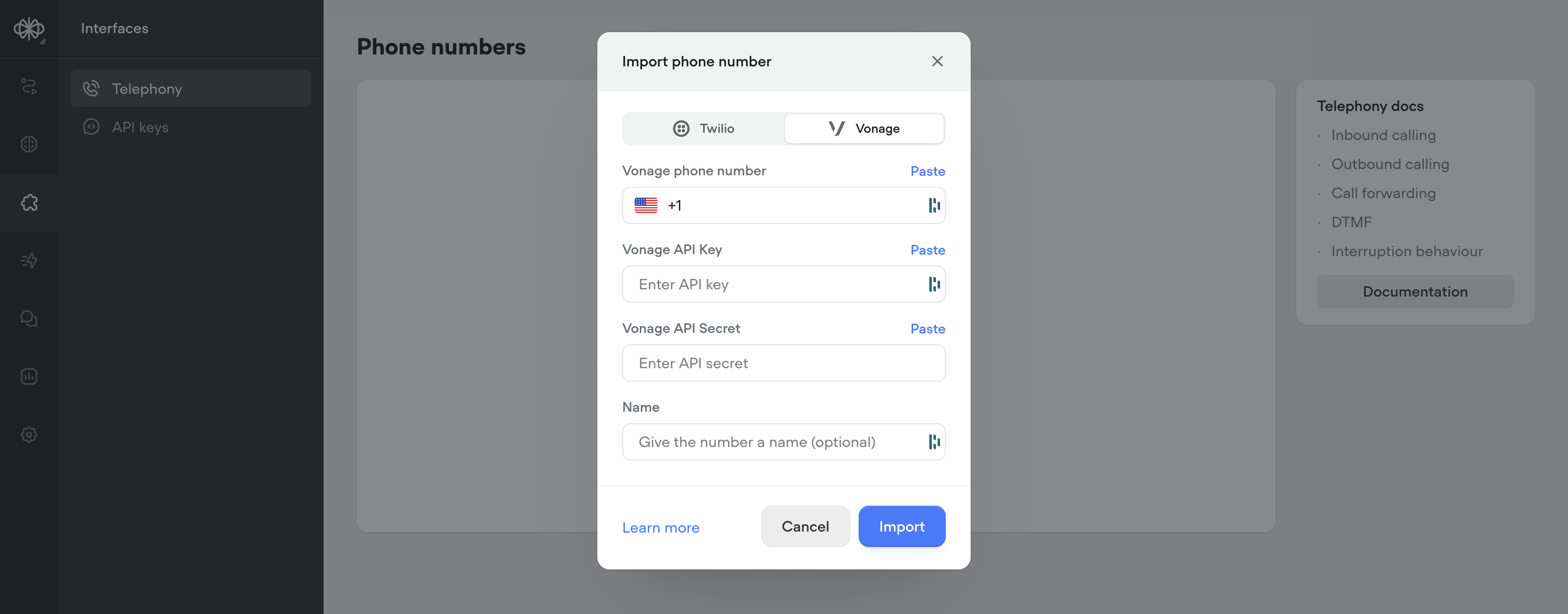Your AI agents just got a massive upgrade:
- Transcripts, reimagined – Replay calls, debug step-by-step, filter with precision, and visualize user actions like button clicks — all in a faster, cleaner UI.
- Evaluations, your way – Define what “good” looks like with customizable evaluation templates, multiple scoring types (rating, binary, text), auto-run support, and performance tracking over time.
A full overhaul of the transcripts experience, built to help teams analyze, debug, and improve agents faster.
-
Call recordings – Replay conversations to hear how your agent performs in the real world
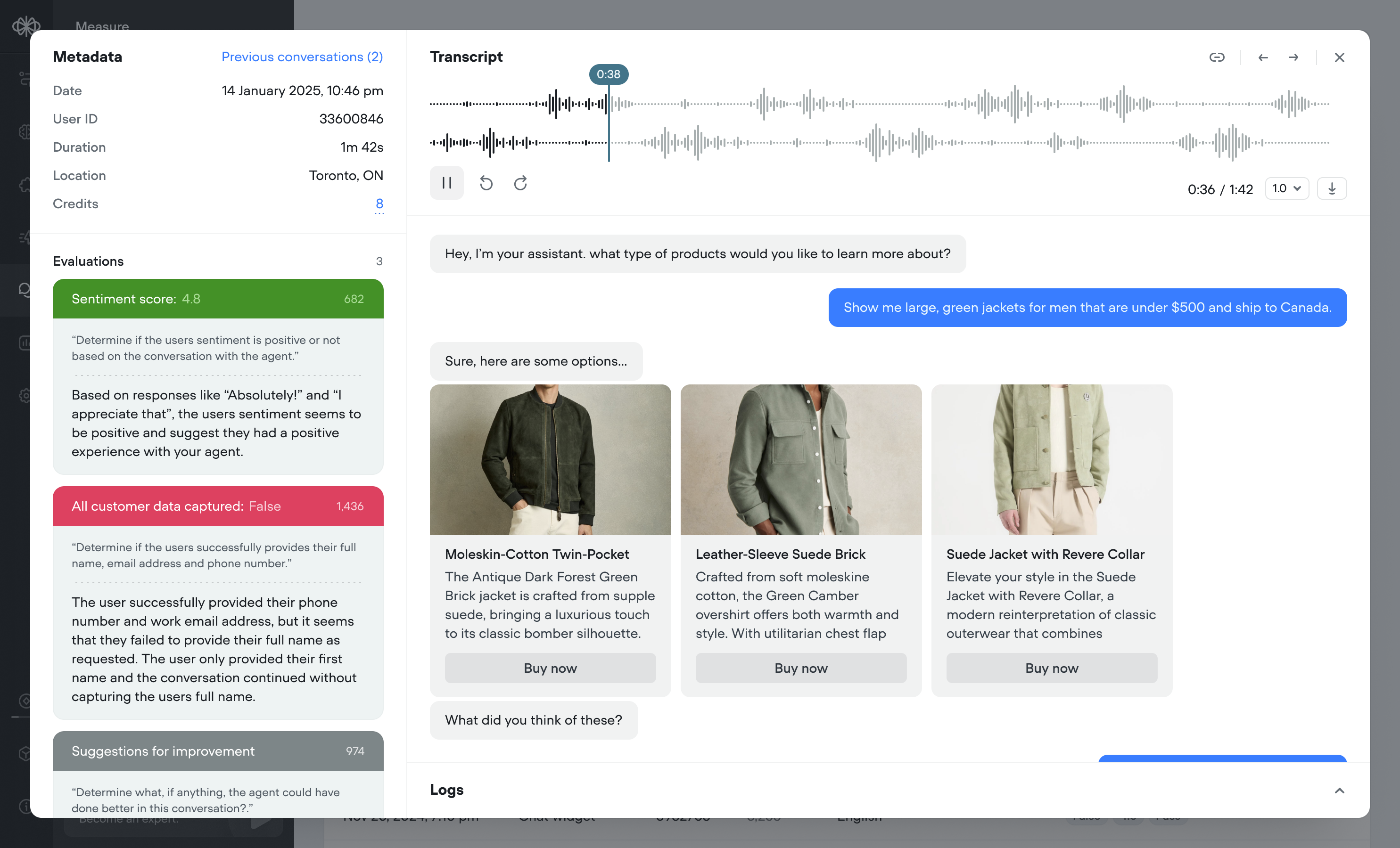
-
Robust debug logs – Trace agent decisions step-by-step

-
Granular filtering – Slice data by time, user ID, evaluation result, and more
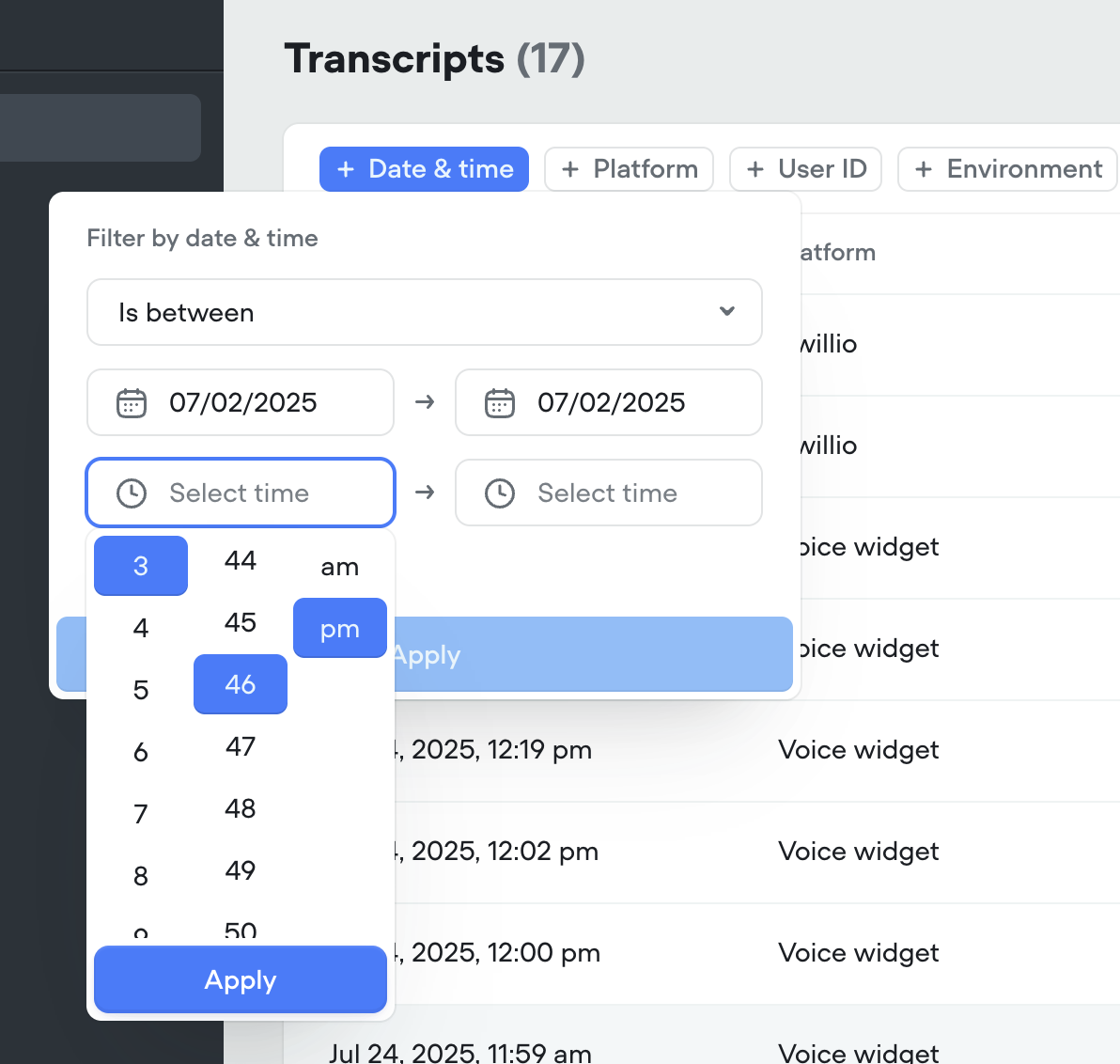
-
Button click visualization – See exactly where users clicked in the conversation

-
Cleaner UI – Faster load times, more usable data
Define what “good” looks like — and measure it, your way. Build (or generate) your own evaluation criteria, tailor analysis to your business goals, and iterate with confidence.

Eval types – support for:
- ⭐ Rating evals (e.g. 1–5)
- ✅ Binary evals (Pass/Fail)
- 📝 Text evals (open-ended notes)
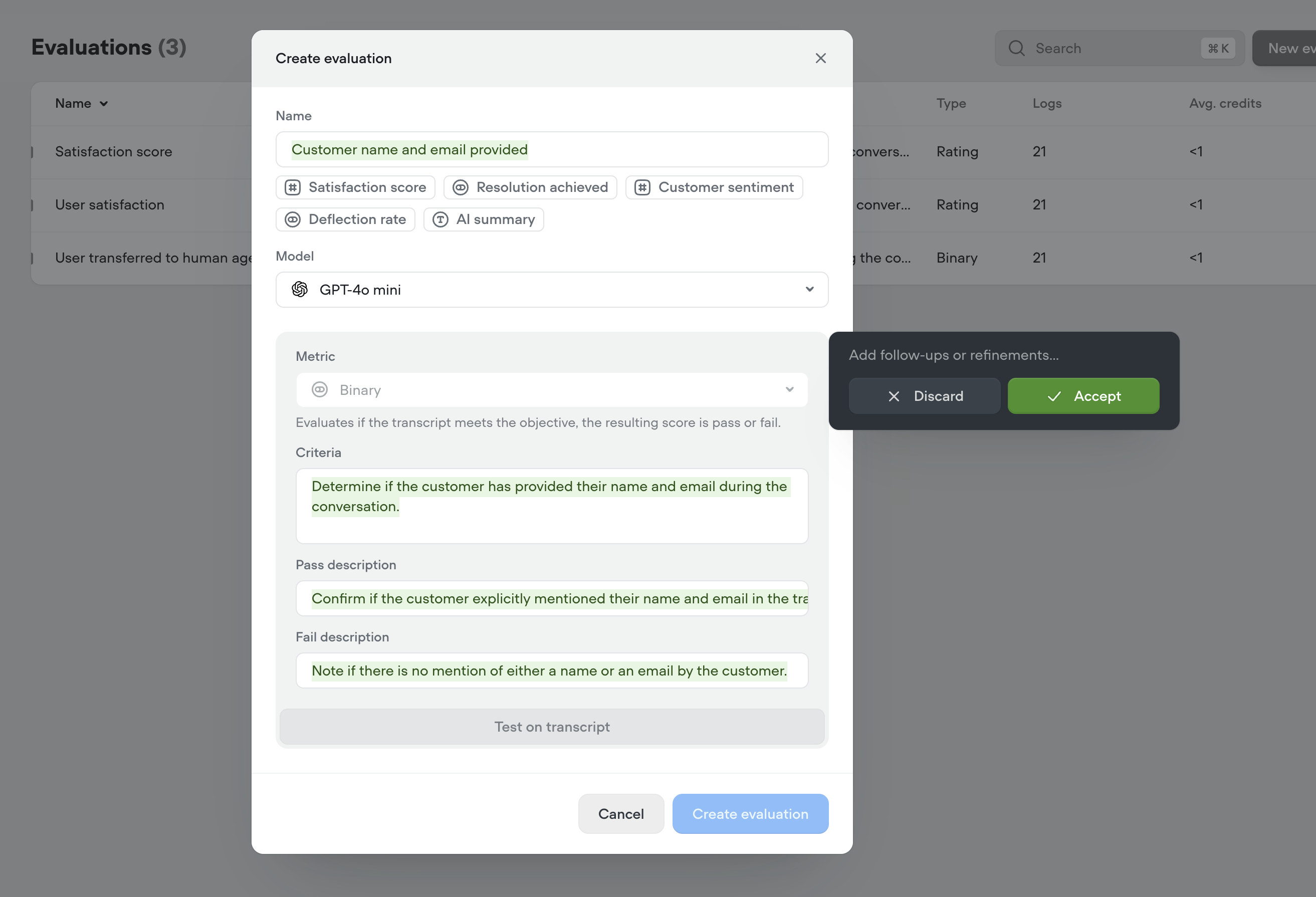
Also includes:
-
Batch or auto-run – Evaluate hundreds of transcripts in a few clicks, or automatically as they come in
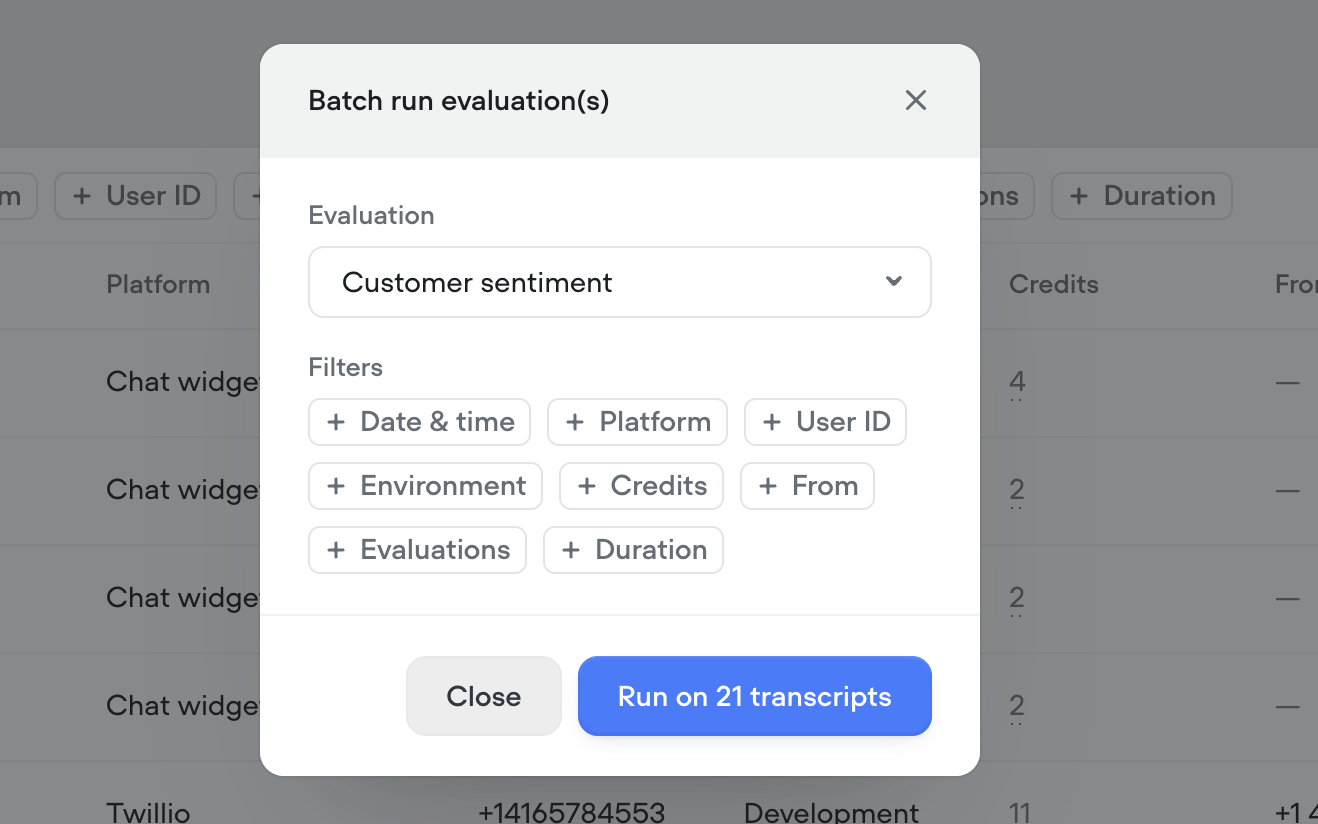
-
Analytics & logs – See detailed results per message or overall trends over time
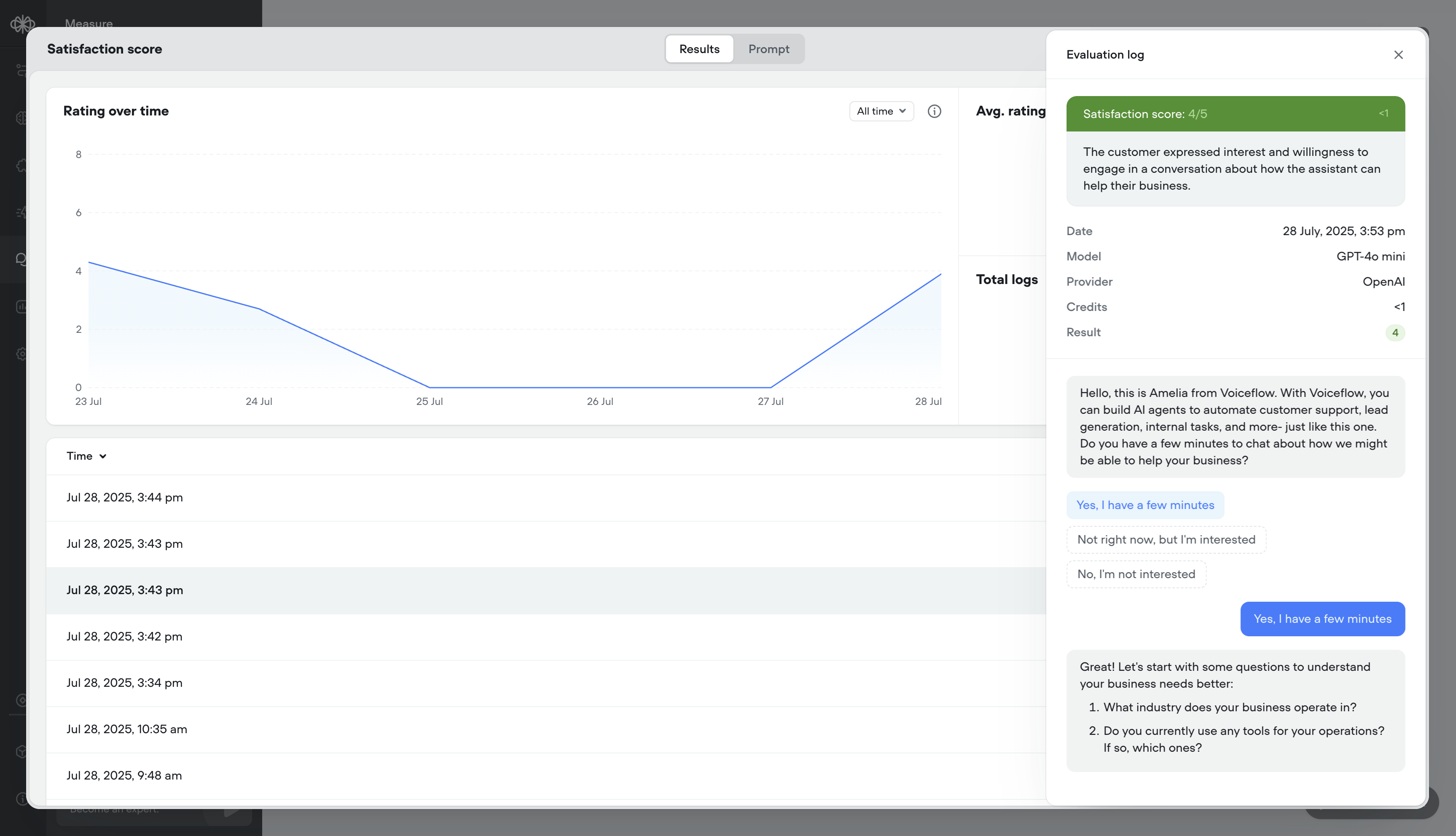
- We've release a brand new Evaluations API
- We've release a new Transcripts API
- The legacy Transcripts API is still supported and currently has no deprecation timeline
🕓 Transition Period:
Until September 28, 2025, all transcripts will be available in the legacy view, for existing projects. On September 28th, 2025 the old view will be hidden and the new transcripts view will be the default. Transcripts older than 60 days will still be accessible via API for the foreseeable future.
